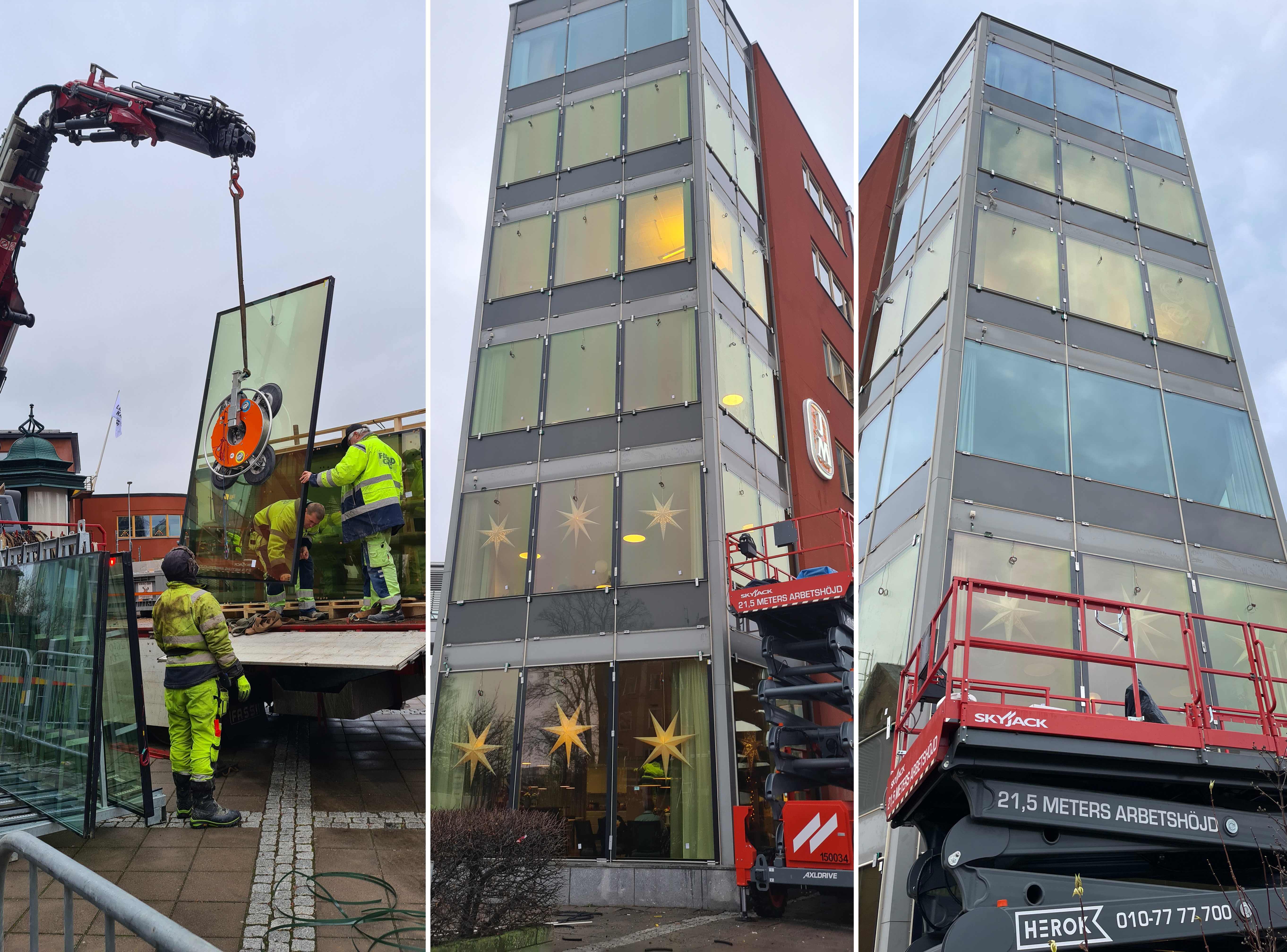06 | 2023 – Smart windows now reduce energy consumption in Swedish offices
Lightweight, switchable and smart glass technologies can significantly improve the energy management of buildings with large-area windows and glass facades and contribute significantly to reducing energy consumption for heating or cooling. Improving the availability and cost efficiency of such smart glasses and the corresponding manufacturing processes is the declared goal of the EU-funded Switch2Save joint project. The project partners are now on the finish line and have installed the first electrochromic insulating glass units to demonstrate and test the potential energy savings in a Swedish office building. These and other smart solutions for windows and building facades will be presented at the BAU trade fair, April 17-22, 2022, in Munich/Germany, at the Fraunhofer joint booth 528 in hall C2.

The energy exchange between the interior of buildings and their environment is strongly influenced by windows and glass facades. Solar radiation can thus be effectively used to support heating. Likewise, shading is important for reducing cooling energy in the building. Smart glasses, such as electrochromic (EC) and thermochromic (TC) windows, allow control of heat radiation into the building at the "push of a button," making it possible to drastically reduce the heating and air conditioning energy requirements of large buildings. Compared to conventional blinds or sunshades, they provide a high level of light comfort indoors.
Electrochromism is based on materials that change their light transmission in the visible and infrared range by applying an electrical voltage, while thermochromism is based on materials that change their infrared reflectance properties with increasing temperature.
Universities, research institutes and industrial partners are working together in the EU-funded Switch2Save project. Their goal is to realize lightweight and energy-efficient insulating glass units with EC and TC systems. To this end, manufacturing technologies are being further developed to equip large windows and glass facades. This should also lead to higher availability and cost efficiency.
A lot has happened since the project was launched in 2019. In the meantime, prototypes of novel switchable windows have been developed. Project coordinator Dr. Matthias Fahland from Fraunhofer FEP explains: "These windows can be retrofitted in existing buildings to support the energy efficiency of heating and air conditioning systems. The new solution is characterized by its ability to integrate different types of optically variable smart coatings into a building envelope."
The partners Chromogenics AB from Sweden and the Fraunhofer Institute for Silicate Research ISC have developed novel electrochromic coatings for this purpose. These enable a window to be switched between a dark and a clear state.
Fraunhofer FEP and the University of West Bohemia Pilsen have realized a roll-to-roll deposition process for thermochromic vanadium oxide. This material leads to a self-sufficient regulation of the transmitted thermal radiation depending on the outside temperature. The use of roll-to-roll technology also supports the development of cost-efficient manufacturing.
Both types of these smart coatings can be produced on lightweight, flexible substrates such as ultra-thin glass and PET films.
Two buildings with different climatic conditions in Greece and Sweden were selected for the project, to be equipped with 50 windows and 200 m² of glass façade area. The energy saving potential of the new solutions will be evaluated and monitored in real terms in these buildings.
After three years of development work, the project partners are highly satisfied that these resulting glass solutions could be installed at the end of 2022. The selected office building in Uppsala, Sweden has recently been equipped with the new insulating glass units in order to perform a complete "before and after" comparison of the energy demand over an annual cycle.
In the next step, the researchers intend to further scale up the technologies. In addition, projects with larger demo sites are in focus. During the BAU trade fair, from April 17 - 22, 2023, Fraunhofer FEP researchers will present a switchable glass and other results on thermochromic and electrochromic coatings as well as hydrophilic layers for building solutions from the Switch2Save, NewSkin (grant agreement no.862100) and FLEX-G 4.0 (03EN1048A) projects at the Fraunhofer joint booth No. 528 in hall C2.
About Switch2Save
Lightweight switchable smart solutions for energy saving large windows and glass facades
This project was funded by the European Union under the Horizon 2020 research and innovation program under grant agreement number 869929 for the Switch2Save project.
Funding reference: 862100
Duration: 01.10.2019 – 30.09.2023
www.switch2save.eu
Fraunhofer FEP at BAU 2023
April 17 – 22, 2023
Munich trade fair center
Fraunhofer joint booth No. 528, hall C2
Talk:
„Thin-film technologies for the energy transition“; Dr. Matthias Fahland
April 18th, 2022, 1:30 pm, Fraunhofer joint booth no. 528, hall C2
 Fraunhofer Institute for Electron Beam
Fraunhofer Institute for Electron Beam